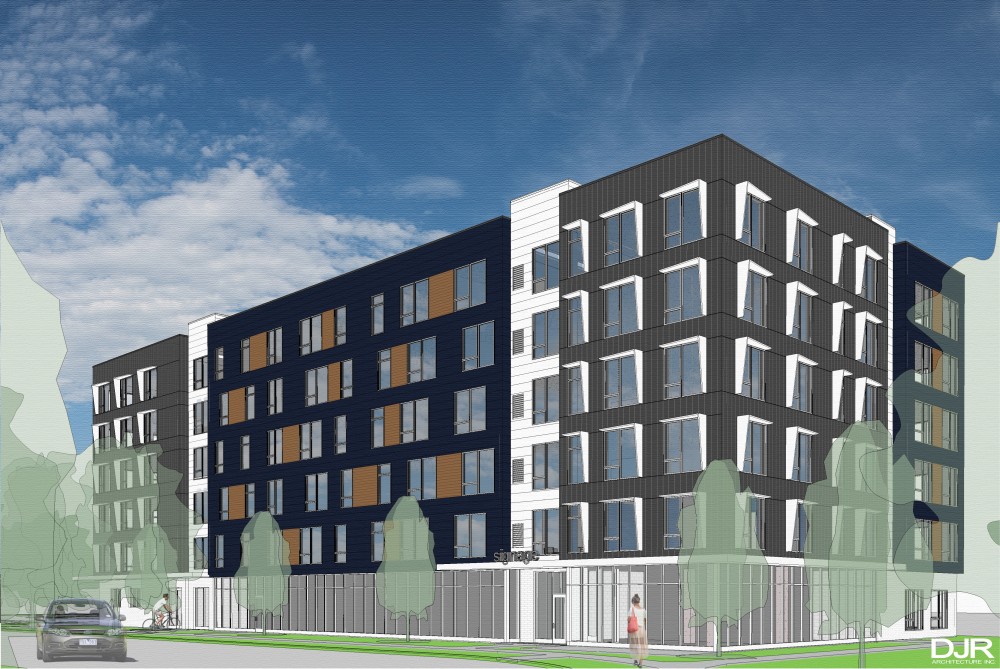Marcy-Holmes may have a chance to catch up to a rise in affordable housing that other University of Minnesota neighborhoods have seen in recent years.
Reuter Walton Development is in the early planning stages of constructing a six-story, 88-unit affordable housing complex located on the surface parking lot of the American Spirit building at 801 9th St. SE. Developers met with the Marcy-Holmes Neighborhood Association for the first time on July 10 to discuss their project.
In the meantime, Reuter Walton has submitted loan applications to city and state agencies to help fund the proposed American Spirit Apartment and expects a response by late fall. Planning can proceed to the city level after the award is received, said Kyle Brasser, a lead developer for Reuter Walton.
Developers said they are open to working with the University to help provide resources to low-wage residents, particularly with the site’s proximity to campus.
“This location is next to major employment centers, and often the case [is] there’s a mismatch where low-wage service workers are, where they work and where they actually live,” said Thomas Watson, Reuter Walton project manager. “Part of the idea here is we can help bridge that gap, especially at the University, [where] there’s a ton of hospitals where they have low-wage staff.”
When some Marcy-Holmes residents voiced concern about making the building accessible to tenants with disabilities, Watson introduced the idea of supportive housing, a type of unit which provides stability to tenants who may struggle with obtaining or staying in housing, he said.
“You might have a case manager on-site who can help them with medical issues or help them access resources for financial support or other things that might trip up someone with barriers to housing,” Watson said.
Room layouts range from studios to three-bedrooms, with 20 percent of the units priced at 30 percent of the area’s median income and the rest at 60 percent of AMI, Brasser said.
MHNA issued a letter supporting the affordable housing development on June 13, with the caveat that the neighborhood would need to meet with developers to learn more project details.
Marcus Mills, MHNA’s Land Use and Development Committee chair, said having mix of tenants — both low-wage and otherwise — provides safety and a diverse perspective to the building’s community.
“Having people who work at all different types of day in the same building creates a general flow around the building that increases security,” Mills said. “There’s literally just an ordinary set of eyes out at every hour… That’s not something you get when you have all the same type of people.”
Mills said he is interested in seeing how the aesthetics of the building will develop, adding that its appearence may influence how neighbors perceive affordable housing.
“One of the worst things that happens, especially with affordable housing, is that you put it up and it becomes an eyesore and people start disparaging the building and anybody who lives in it,” Mills said.
He pointed to Marcy-Holmes’s aging population as an example of the growing need for affordable housing that allows residents to stay close to the community.
Developers requested a second letter of support from MHNA, updated to mention that they have met with the association.














